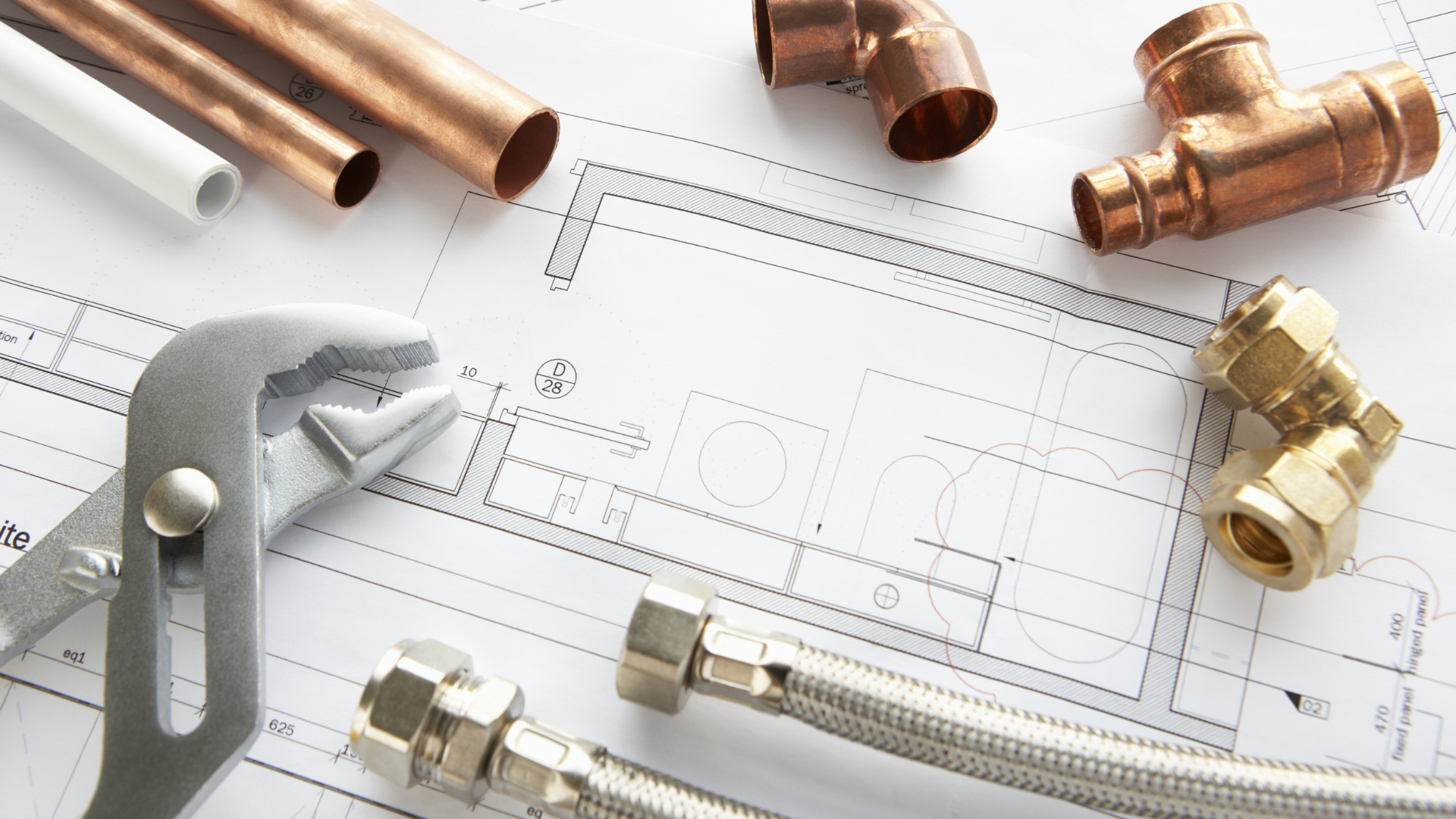When it comes to plumbing, it’s important to have a good understanding of the materials being used. In this blog article, we’ll discuss the most common plumbing materials. Read on to learn how they work so that you can make the best decision when it comes to your plumbing system.
Copper Piping
Copper piping is one of the most popular plumbing materials. This is because of its durability and corrosion-resistant properties.
It’s also easy to install and has a long lifespan. This makes it a great choice for both residential and commercial applications.
Copper piping is also non-toxic and recyclable. This means that it’s a great option for those looking for eco-friendly solutions.
However, copper piping isn’t without its drawbacks. It can be susceptible to damage from water chemistry problems such as low pH levels or high chlorine content. Additionally, copper pipes tend to be more expensive than other types of plumbing materials, such as PVC or PEX piping.
Furthermore, copper pipes are thin-walled, which makes them more prone to reaching their freezing point. In winter, this could pose a risk, sometimes requiring professionals who specialize in frozen pipes chicago (if that’s where you live) to sort out the issue.
Plastic Pipes
There are many different types of plumbing materials available on the market, but some of the most common are plastic pipes. Plastic pipes are a popular choice for plumbing. This is because they are lightweight, easy to install, and relatively inexpensive.
PVC pipes are the most common type of plumbing pipe used in homes today. PVC, or polyvinyl chloride, is a strong, durable plastic that is easy to work with and install. They can be used for a variety of applications. These include drainage, water supply, and sewerage. Traditionally, they have been hard to dig up and repair, but these days with trenchless sewer repair methods readily available from services such as Pro Sewer Repair (https://prosewerrepair.com/service/trenchless-sewer-repair/), the process has become more cost-effective, making PVC pipes a popular choice in sewer and plumbing lines across the world. Also, it helps that they are available in a variety of diameters and lengths to accommodate any plumbing project. PVC pipes are joined together using couplings, fittings, and glue, and can be cut with a saw if necessary.
PEX (cross-linked polyethylene) is a newer type of plastic pipe that is becoming increasingly popular in plumbing. PEX pipes are flexible and easy to install, and they are resistant to freezing and bursting. PEX pipes are often used for radiant heating systems and domestic water lines.
CPVC (chlorinated polyvinyl chloride) is another type of plastic pipe that is commonly used in plumbing. Bearing resemblance to its counterpart, PVC pipes, CPVC pipes are crafted using a distinct type of plastic that renders them highly resilient against the detrimental effects of chemicals and heat. Nevertheless, it’s worth noting that these pipes may not possess the same level of flexibility, nor robustness to withstand shear forces. When exposed to such pressures, there exists a possibility of fracturing, necessitating the implementation of burst pipe repair measures to rectify the situation.
Lead Pipes
Lead pipes were once a common material used in plumbing, but they have since fallen out of favor due to the health risks associated with lead exposure. The concern stems from the potential leaching of lead into the water supply, posing health problems if ingested. While lead pipes are no longer installed in new construction, they may still be present in older homes.
If you suspect that your home has lead pipes, it is crucial to take prompt action and have them replaced by a licensed plumber. Replacing lead pipes with good material pipes, such as copper or PEX, is essential to ensure the safety and quality of your water supply. Qualified plumbing professionals possess the expertise to assess the plumbing system, identify lead pipes, and execute the replacement process efficiently.
Galvanized Steel Pipes
There are a few different types of steel pipes that are commonly used in plumbing applications. One type is galvanized steel pipes.
These pipes are coated with a layer of zinc, which helps to protect the pipe from corrosion. Galvanized steel pipes are often used for carrying water and wastewater.
Another type of steel pipe that is commonly used is black steel pipe. This type of pipe is not coated with zinc, but it is still resistant to corrosion. Black steel pipes are often used for carrying natural gas and oil.
Stainless Steel Pipes
Stainless steel pipes are one of the most common plumbing materials. They’re used in both residential and commercial properties.
While they are more expensive than other options, such as PVC or copper, they offer many advantages. Stainless steel pipes are incredibly durable and can withstand high temperatures and pressures.
They are also resistant to corrosion. This makes them ideal for use in areas where water quality is an issue.
Iron Pipes
Iron pipes are one of the most common plumbing materials. They are strong and durable and can withstand high temperatures and pressures. Iron pipes can be used for both hot and cold water applications.
They are often used for drain lines, sewage lines, and vent stacks. Iron pipes can also be used for gas piping applications. This type of pipe is commonly used in industrial settings as well as residential buildings.
Plumbing is an essential part of any home, and it’s important to understand how the different materials used in plumbing work. Each material has its advantages and disadvantages depending on your specific needs.
It’s always best to consult with a professional plumber when installing or repairing your home’s plumbing system. This way, you get a reliable system that lasts for many years.


